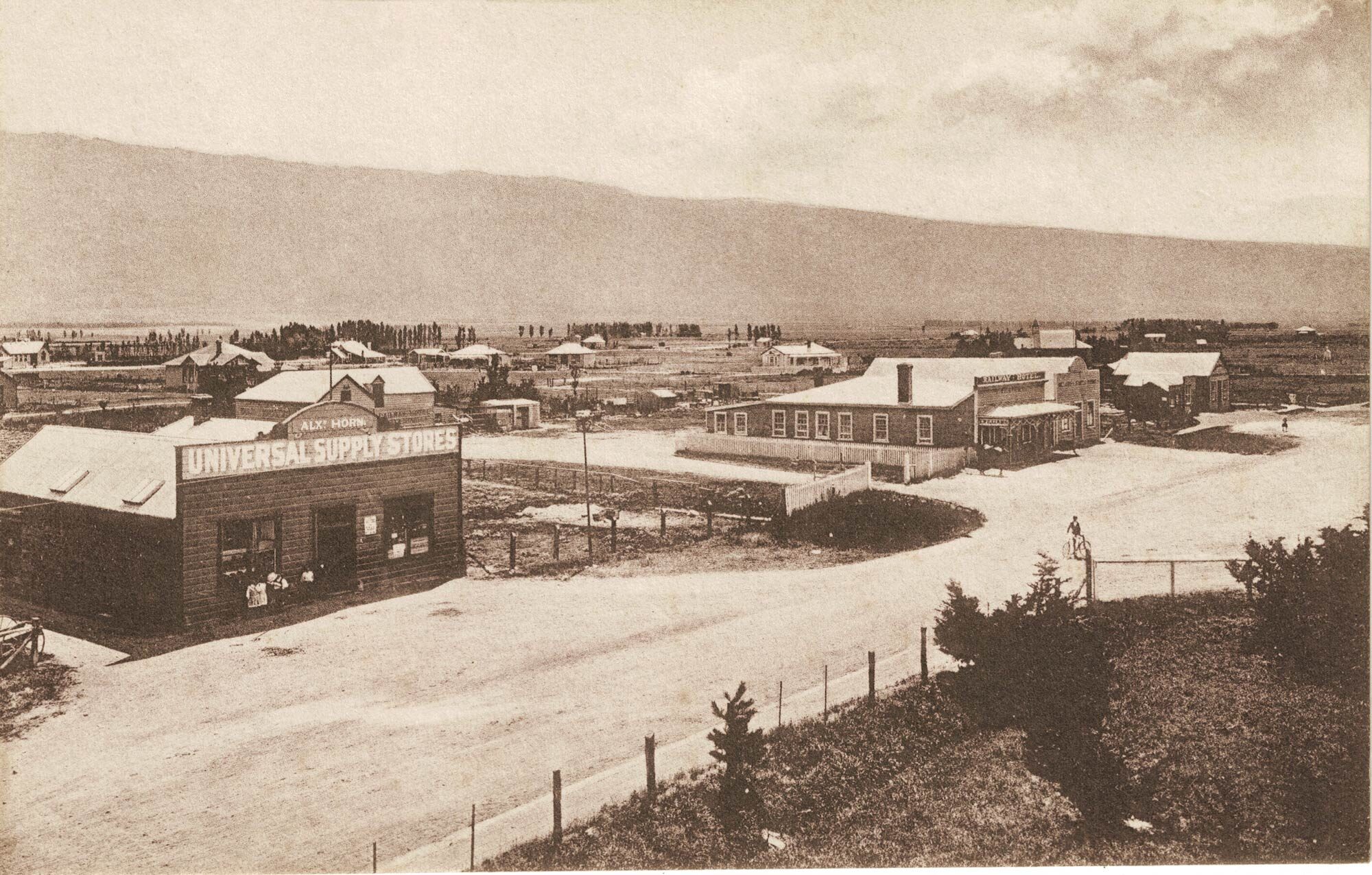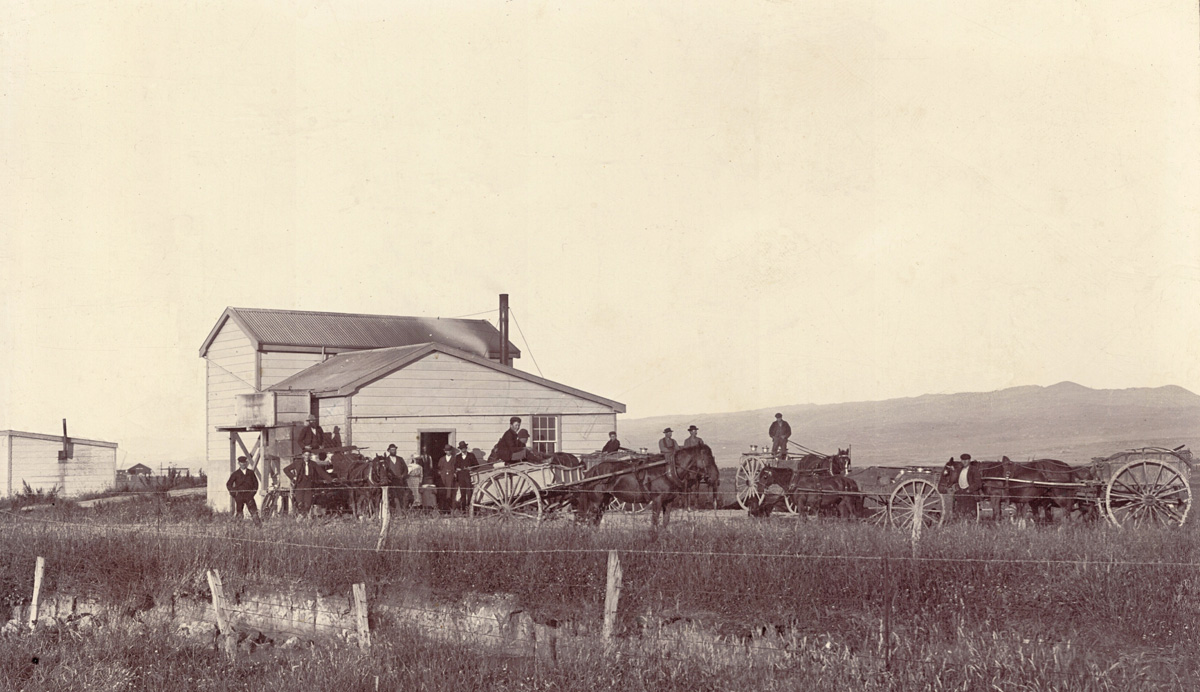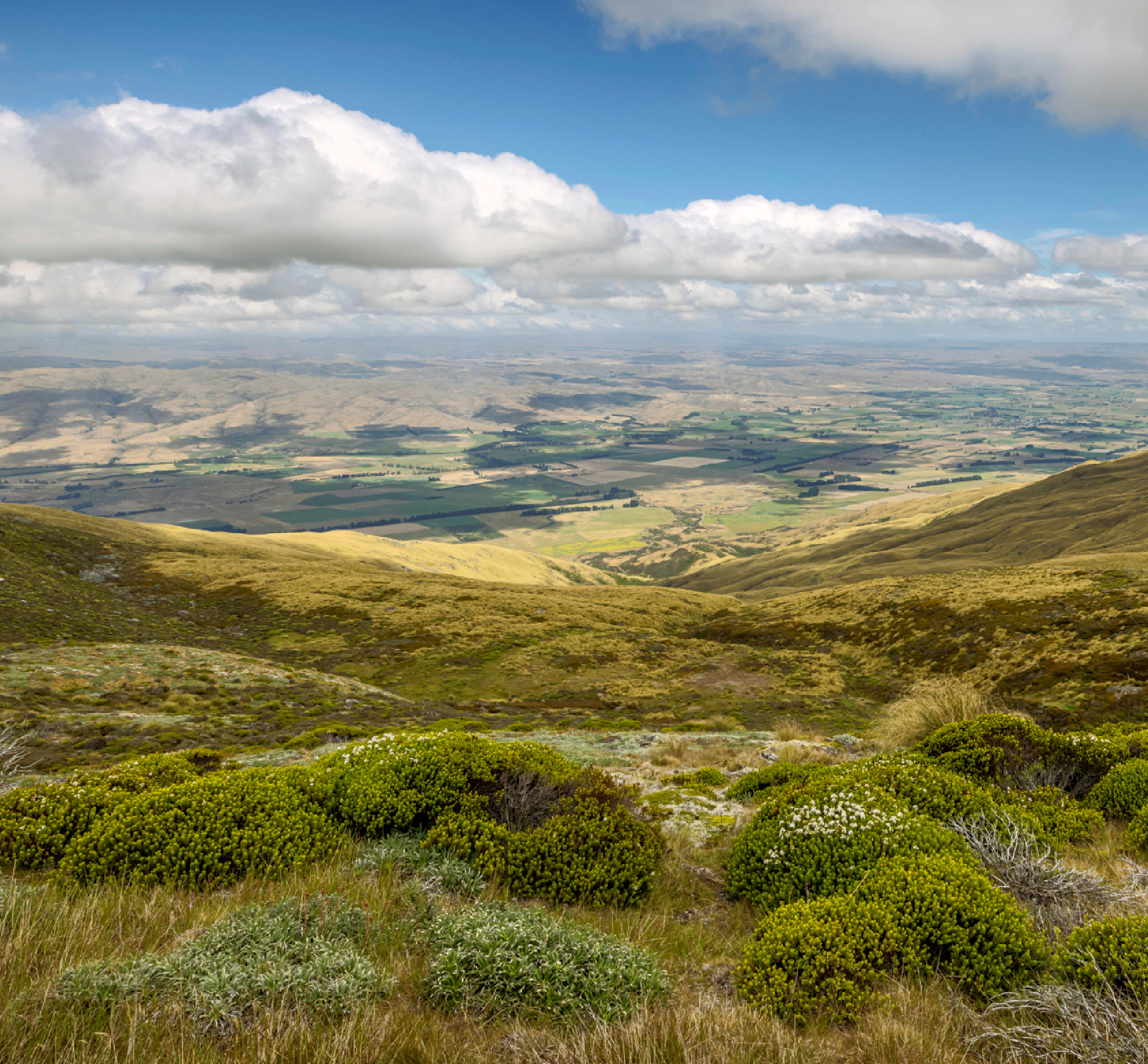
Our History
Middlemarch is a town with a fascinating history, shaped by its Maori heritage, early European settlement, the gold rush era, and the development of the Otago Central Railway. From ancient moa hunting grounds to the bustling days of the railway, Middlemarch’s past is rich and diverse. Explore the stories that have shaped this iconic Central Otago destination and discover how its history continues to influence the community today.
The first European settlers to the region arrived in the 1850s, establishing large grazing runs. One theory on how Middlemarch was named, is for its location at the middle of the boundary (known as a ‘march’ to the Scottish settlers) between two major runs of the time, Gladbrook and Taieri Lake.
When gold was discovered at Hyde in 1862-3, the resultant gold rush established a trail from Dunedin to Hyde alongside the Taieri River on the valley floor at the eastern foot of the Rock & Pillar Ranges. Townships grew along the route at regular intervals, to service the travellers on horseback or wagon – Lee Stream, Clark’s Junction, Sutton, Middlemarch, Rock & Pillar.
Work on the Otago Central Railway began in 1879 from Wingatui near Dunedin, navigating the difficult Taieri gorge and finally reaching Middlemarch in 1891, where a new station, outbuildings and station master’s house had been built. By 1883 the line was servicing over 2,000 passengers and 17,000 tons each of goods per year. Proximity to the railway station made Snow Avenue the town hub, with two hotels, a post office, stock agents, a garage and a butcher.
Strath Taieri School, located in Middlemarch in the Strath Taieri region opened in 1880 as a High School. It has a long history of serving a rural community, evolving with the region through railway development, farming, and tourism changes. In 1975 it became a full Primary School, since then secondary pupils have either travelled to Taieri College in Mosgiel, or gone to boarding school. The school continues to operate today as a co-educational state primary school for Years 1–8.
Arden was the planned township for the Strath Taieri district shown on Surveyor Edie’s survey map of 1883. Even so, it was the private township of the Humphreys of Garthmyl, an early run in the middle of the Strath Taieri Plain, which gave name to the township of Middlemarch that we know today.
The first ski field in Otago — and actually one of the earliest in New Zealand — opened in 1932 on the Rock and Pillar Range, near Middlemarch in Central Otago.It was developed by the Otago Ski Club, which later became part of the Otago University Tramping Club. Skiing at the time was very rudimentary compared to modern standards — there were no ski lifts, and skiers would hike up the slopes. The location on the Rock and Pillar Range was used because of its reliable snow and accessibility from Dunedin. This early development played an important role in the history of skiing in New Zealand, helping establish Otago as a key region for alpine sport.
The Hyde train disaster occurred on 4 June 1943, near the town of Hyde in Central Otago, New Zealand. It is one of the worst railway disasters in the country’s history. The accident happened when a passenger train, travelling from Cromwell to Dunedin, derailed due to excessive speed on a curve. 21 people were killed, and 47 were injured. The tragedy led to changes in New Zealand’s rail safety procedures and remains a significant event in the region’s history. A memorial to the victims can be found near the site of the derailment, between Middlemarch and Hyde.
The railway line from Middlemarch to Clyde — part of the Otago Central Railway — was officially closed in 1990. The line originally opened in stages starting in the late 1800s, with the full line to Clyde completed in 1921. It was used primarily for freight, especially to support farming and the construction of the Clyde Dam. Declining use and high maintenance costs led to the closure of the section beyond Middlemarch in 1990. The transformation from railway to rail trail is considered one of New Zealand’s most successful heritage and tourism projects.
The Department of Conservation (DOC) took over management of the Otago Central Rail Corridor after the railway line between Clyde and Middlemarch was formally closed, with the vision of converting it into a public recreational trail. DOC’s early involvement was crucial in preserving the corridor and transforming it into a nationally significant walking, cycling, and horse-riding trail that now draws tens of thousands of visitors each year.
The Otago Central Rail Trail officially opened in the year 2000. It was New Zealand’s first Great Ride and is a 150-kilometre trail following the route of the former Otago Central Railway line between Middlemarch and Clyde in the Otago region of the South Island. The trail has since become a popular destination offering a scenic journey through historic towns, stunning landscapes, and tunnels and viaducts from the original railway.
The inaugural Middlemarch Singles Ball took place in 2001, and its purpose was to help find wives for single farmers – especially nurses – to address local population needs. The event, which began at the Easter A&P show, instantly became a hit community fundraiser. Its overwhelming success—tickets selling out quickly and media coverage—led it to become for a time a biennial rural tradition.
For more information on the history of Middlemarch and the surrounding District, visit the Middlemarch Museum


Origins of a District and Township
The name of the district, Strath-Taieri, is a combination of the Scottish word strath, meaning a wide river valley, and a misspelling of the te reo Māori word Taiari, meaning spring tide.
There are several theories about how the township of Middlemarch was named. As mentioned on timeline some say Middlemarch was named for its location at the middle of the boundary (known as a ‘march’ to the Scottish settlers) between two major runs of the time, Gladbrook and Taieri Lake. Another suggests that Mrs Alice Humphreys (née Hawdon, 1848–1934), whose husband Edward Wingfield Humphreys owned and surveyed sections for sale in the new township, named it in 1876 after George Eliot’s novel Middlemarch: A Study of Provincial Life. Another theory is that the name derives from the now-obsolete English term march, meaning a boundary—here referring to a middle area between two rivers.
Middlemarch’s name may also have been influenced by the Northumberland ancestry of early surveyor John Turnbull Thomson. Notably, there is a Middle March region in Northumberland, centred around the town of Otterburn.